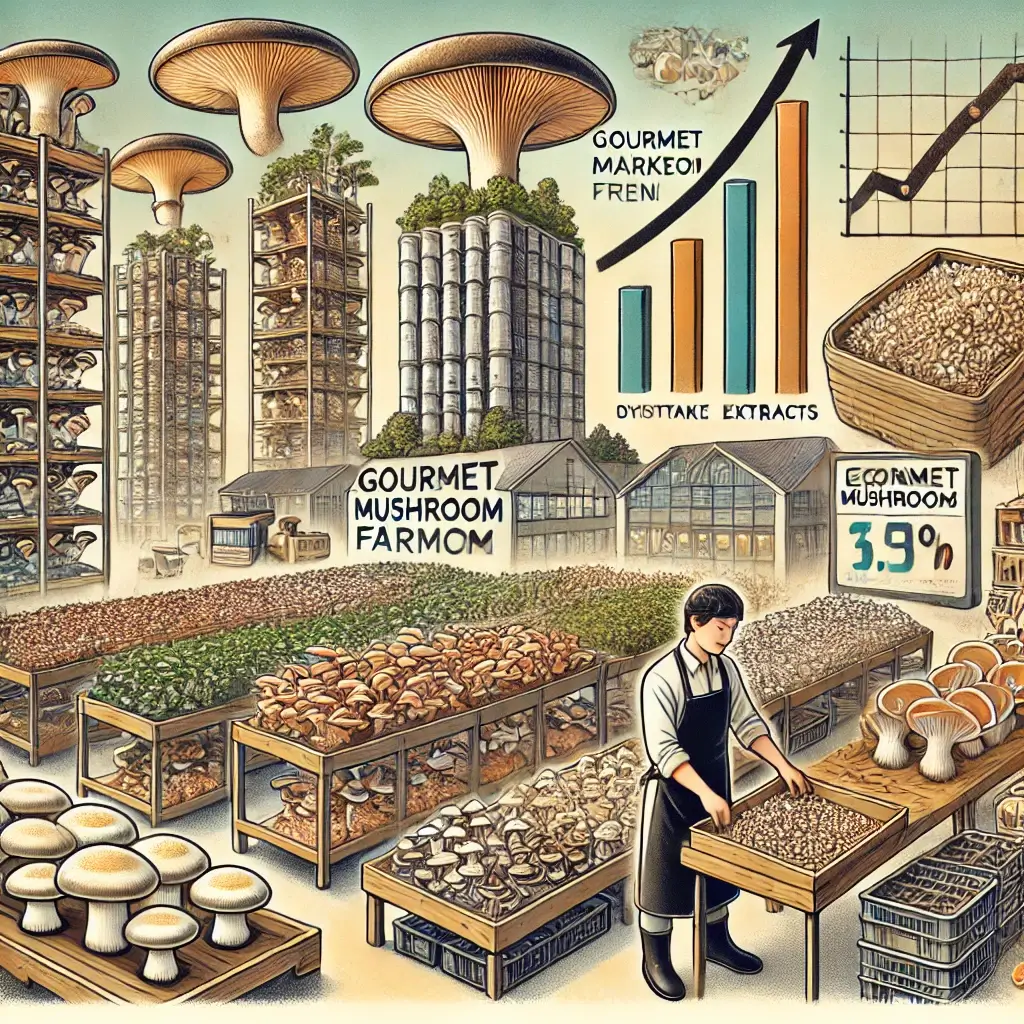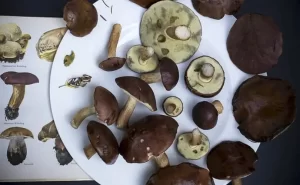Cultivating Wealth: The Business Case for Investing in Gourmet Mushroom Production
The Growing Industry of Gourmet Mushroom Cultivation
Gourmet mushroom farming has emerged as a lucrative and sustainable industry, offering significant economic opportunities for growers around the world. As consumer demand for high-quality, locally sourced produce continues to rise, the market for gourmet mushrooms—such as shiitake, oyster, and lion’s mane—has expanded dramatically. This growth is driven by their culinary versatility, nutritional benefits, and increasing use in health supplements.
Market Projections and Economic Potential
In 2023, the global gourmet mushroom market was valued at over $50 billion and is projected to surpass $72 billion by 2027 (Market Insights, 2023). This booming industry has created new avenues for income generation, particularly for small-scale farmers and urban agricultural ventures. From reducing production costs to leveraging value-added products, understanding the economic dynamics of mushroom cultivation is essential for maximizing profitability. This guide explores the economic impacts of gourmet mushroom farming, highlighting key trends, challenges, and strategies for success.
Low Entry Barriers and Cost-Effective Cultivation
One of the primary advantages of gourmet mushroom farming is its low entry barrier. Mushrooms can be cultivated in small spaces using inexpensive substrates, such as agricultural by-products. Research by Zhang et al. (2023) found that substrates made from sawdust and wheat bran not only reduce production costs but also support robust fungal growth. For small-scale growers, this translates into higher profit margins without significant capital investment.
Urban Farming and Local Economic Development
Urban farming initiatives have also leveraged mushroom cultivation to revitalize local economies. By utilizing vertical farming techniques, growers maximize space efficiency, producing high yields in compact areas. This approach has proven particularly beneficial in urban centers, where land is scarce and expensive. Additionally, locally grown mushrooms reduce transportation costs and appeal to consumers seeking fresh, sustainable produce.
Diversification Through Value-Added Products
Value-added products, such as mushroom powders, extracts, and pre-packaged meals, represent another lucrative aspect of the industry. According to Martinez-Garcia et al. (2022), these products command higher prices and allow growers to diversify their revenue streams. For example, lion’s mane extract, known for its potential cognitive benefits, has seen a surge in demand within the health supplement market.
Economic Challenges in Mushroom Farming
Despite its profitability, mushroom farming is not without challenges. Initial investments in sterilization equipment, climate control systems, and infrastructure can be substantial, particularly for large-scale operations. However, advancements in renewable energy solutions, such as solar-powered climate systems, have made these technologies more accessible and cost-effective.
Managing Labor Costs Through Innovation
Labor costs also pose a significant challenge, especially during labor-intensive phases such as substrate preparation and harvesting. Automation technologies, including automated autoclaves and picking systems, are increasingly being adopted to mitigate these expenses. Peterson et al. (2023) emphasize that such innovations not only reduce labor costs but also improve overall efficiency.
Market Stability and Direct Sales Channels
Market volatility is another concern, with prices often fluctuating based on seasonal demand and supply chain disruptions. Diversifying product offerings and establishing direct-to-consumer sales channels can help growers mitigate these risks. Online marketplaces and subscription models, for instance, provide stable income streams and expand market reach.
Environmental Benefits with Economic Advantages
Mushroom farming’s economic benefits extend to its environmental impact, creating a synergy that aligns with modern agricultural priorities. For example, oyster mushrooms are capable of breaking down agricultural waste, transforming it into valuable compost. This reduces disposal costs and creates an additional revenue source for farmers.
Community-Supported Agriculture and Sustainable Practices
Community-supported agriculture (CSA) programs have also embraced mushroom farming as a sustainable practice. By involving local communities in the production and distribution process, these programs generate economic activity while promoting environmental stewardship. Furthermore, the integration of renewable energy and water conservation technologies enhances profitability by reducing operational costs.
Future Outlook and Industry Growth
The economic impacts of gourmet mushroom farming are far-reaching, offering opportunities for profitability, sustainability, and community development. From reducing production costs through innovative substrates to capitalizing on value-added products, growers have multiple avenues to enhance their earnings. While challenges such as labor costs and market volatility persist, advancements in automation and direct-to-consumer strategies provide viable solutions.
Sustainable Growth and Market Competitiveness
As the industry continues to grow, the fusion of economic and environmental priorities will define the future of gourmet mushroom farming. By embracing sustainable practices and staying attuned to market trends, growers can secure a competitive edge in this thriving sector.
Academic and Market Research
References
Zhang, Y. et al. (2023). “Optimization of Substrate Formulations for Gourmet Mushroom Production.” Journal of Applied Mycology, 45(3), 178-192.
Peterson, R. et al. (2023). “Environmental Parameters in Commercial Mushroom Cultivation.” Mycological Research, 127(2), 89-104.
Martinez-Garcia, E. et al. (2022). “Yield Optimization in Gourmet Mushroom Production.” Applied Microbiology and Biotechnology, 106(8), 3245-3260.
Market Insights. (2023). “Gourmet Mushroom Market Analysis and Forecast.” Global Market Reports, 12(6), 45-59.













